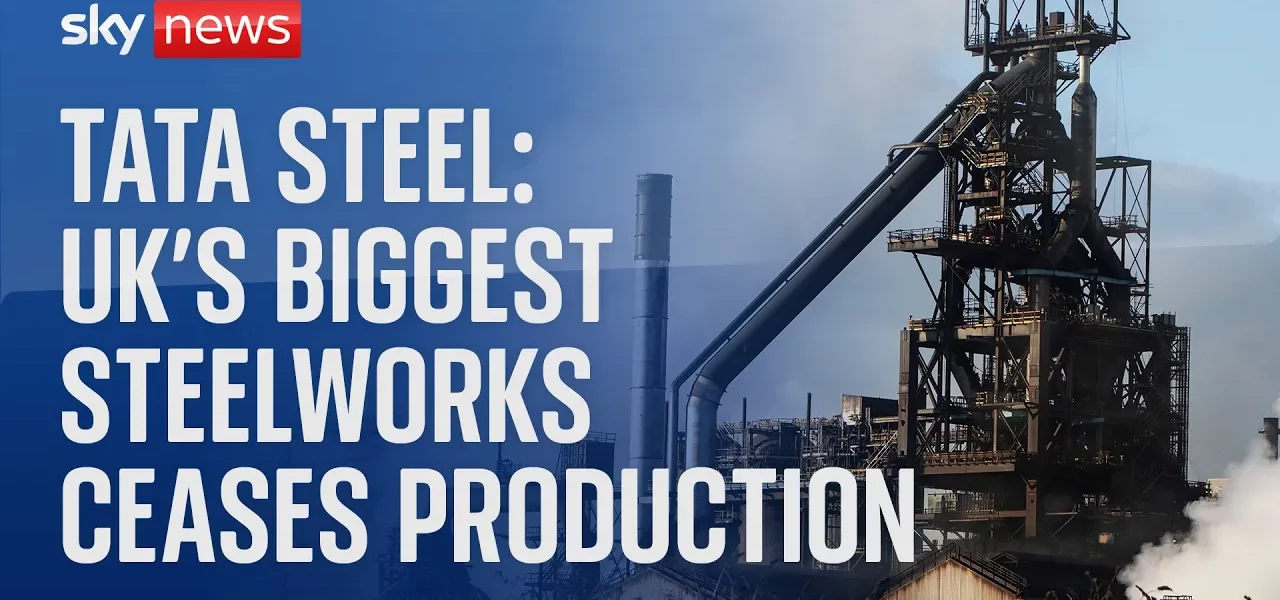The End of Steel Production in South Wales: A Historic Closure

The closure of Blast Furnace 4 marks a significant turning point in South Wales’s industrial history, leading to substantial job losses and a community in transition. This article delves into the implications of this closure, the shift towards greener energy solutions, and the future of employment in the region.
Introduction
The last smoke and steam rising from Blast Furnace 4 is not just a visual farewell to steelmaking in South Wales; it symbolizes the end of an era that has lasted over a century. The emotional weight of this moment is felt deeply by workers and the surrounding community, as the steel industry has been a cornerstone of the local economy. As Stuart Phillips, a dedicated worker of 27 years, reflects on the closure, he embodies the sentiment shared by many who have devoted their lives to this industry. This article will explore the ramifications of this closure, both immediate and long-term, as well as the transition to new technologies and job opportunities.
The Impact of Closure on the Workforce
The closure of Blast Furnace 4 has resulted in over 2,000 job losses, a devastating blow to a community that has historically depended on steel production for its livelihood. The emotional toll on workers is significant, as many have spent decades in the industry. Some of the key aspects of this situation include:
- Job Losses: More than 2,000 workers are directly affected, leading to economic uncertainty.
- Transition Challenges: Workers face a long wait for the new electric Arc furnace to be operational, which is projected to take four years.
- Local Economy Strain: The closure impacts not only the workers but also local businesses that rely on the patronage of steelworkers.
The Future of Steel Production: Electric Arc Furnaces
As the steel industry moves towards modern practices, the construction of a new electric Arc furnace at a cost of £1.25 billion represents a strategic shift. This move is intended to align with greener industry standards and reduce reliance on fossil fuels. Key points regarding this transition include:
Benefits of Electric Arc Furnaces
Electric Arc furnaces are considered more environmentally friendly compared to traditional steelmaking methods. Their benefits include:
- Reduced carbon emissions compared to coal-based production.
- Increased energy efficiency.
- Ability to use recycled materials as input, promoting sustainability.
Timeline for Implementation
The timeline for the electric Arc furnace’s operation highlights the challenges faced by the workforce:
- Construction begins: Immediate future.
- Operational readiness: Approximately four years away.
- Job creation potential: Dependent on successful implementation and integration into the local economy.
The Local Community’s Response
The closure of the steelworks has left many in the community anxious about their future. The Docs Cafe, a local eatery that has served steelworkers for years, is facing uncertainty as customers dwindle. Key community responses include:
Community Sentiment
Local residents have expressed mixed feelings about the closure:
- Grief over the loss of jobs and community identity.
- Hope for future employment opportunities in greener industries.
- Concerns about the speed of transitioning away from fossil fuels and the lack of immediate alternatives.
Support for Transition
While there is recognition of the need for greener practices, many believe the transition is happening too quickly:
- Calls for more support for displaced workers during the transition period.
- Advocacy for sustainable job creation in the region.
- Community discussions about future energy sources, including offshore wind farms.
The Shift from Coal to Greener Energy Solutions
The closure of the power plant in Ratcliff, coinciding with the end of steel production, marks a significant step in the UK’s transition away from coal. This shift signifies a broader movement towards greener energy strategies. Important considerations include:
End of Coal Reliance
The cessation of coal-fired electricity generation is notable for several reasons:
- Reduces the UK’s carbon footprint.
- Aligns with national and international climate goals.
- Promotes investment in renewable energy sources.
Future Energy Landscape
The transition to greener energy sources presents both challenges and opportunities:
- Investment in renewable infrastructure is critical.
- Job creation in emerging sectors must be prioritized.
- Community involvement is essential to ensure a just transition.
Conclusion
The closure of Blast Furnace 4 in South Wales represents a pivotal moment in both the region’s history and the broader narrative of industrial transformation. While the immediate effects are felt in job losses and community upheaval, the anticipated shift towards electric Arc furnaces and greener energy solutions offers a glimmer of hope for the future. It is crucial that both industry leaders and policymakers work collaboratively to support affected workers and stimulate new job opportunities. For those interested in learning more about the transition to renewable energy, please visit our related articles on sustainable industry practices and job creation in the green economy.
“`




